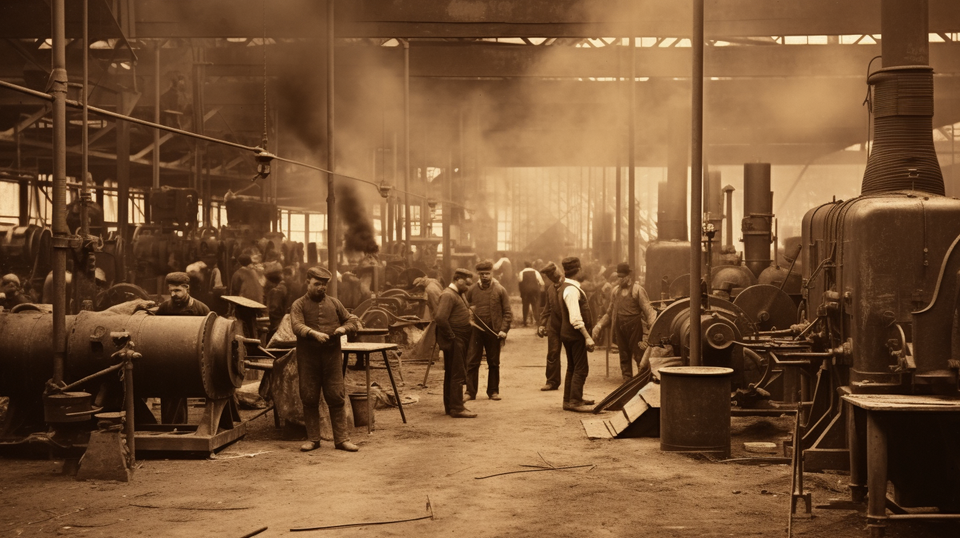The Southern Flavor of Confederate Industrialization

This week's video focuses on the incredible strides the Confederacy made toward industrialization during the Civil War, and what a departure, out of necessity, this represented from antebellum Southern culture. To be sure, there were Southerners who had advocated industrializing before secession, and one can only wonder how different the Confederate experience might have been had those voices been heeded.
Historian Emory M. Thomas, writing in The Confederate Nation: 1861 to 1865, remarks on the distinctly Southern character of this transformation:
The Confederacy’s military-industrial revolution was briefly successful and preeminently Southern. The relatively small group of men who managed the South’s short-lived economic transformation were hardly entrepreneurs whose acquisitive instincts fit the Yankee stereotype. On the contrary, the South’s war industrialists tended to be “traditional intellectuals”— schoolteachers, natural philosophers, and military scientists—as opposed to “organic intellectuals”—industrial managers, mechanical engineers, and the like. And because the military maintained control of the industrialization process, the profit motive was less a factor. Joseph R. Anderson, for example, had been master of the Tredegar Iron Works since 1858, but before he had become an industrialist Anderson had been a West Point graduate, a civil engineer, and a state legislator. When the war broke out he volunteered for the artillery and rose to the rank of brigadier-general. A battle wound sustained during the Seven Days forced him to resign from the army and return to Tredegar. In 1865 he offered to give the works to the government in the hope that Tredegar might run more efficiently. Anderson’s actions were hardly those of a model industrial capitalist. Apparently he identified with the planter-aristocratic tradition to the detriment of his entrepreneurial self-interest.
Other examples deserve mention. [Josiah] Gorgas, for all his success at managing the Ordnance Bureau, failed at a postwar business venture in ironworks and devoted the last fourteen years of his life to higher education in the South. George W. Rains, manager of ordnance operations in Augusta as a Confederate, also sought a postwar career in education. Rains taught chemistry at the Medical College of Georgia. John M. Brooke, director of the naval gun works at Selma and inventor of the Brooke gun, and Matthew Fontaine Maury, who developed and produced torpedo mines and purchased naval equipment for the Confederacy, spent their postwar years at Virginia Military Institute. Confederate Quartermaster General Lawton resumed law practice after the war and pursued Democratic politics. These men, some of the most important and successful Confederate military industrialists, did not choose to put their wartime experiences to use during the “age of enterprise” after the war. Instead they chose more traditional Southern pursuits which had characteristically earned prestige and respectability in the ante-bellum South. It would seem from this that the war industry of the Confederate South not only sprang from a preindustrial economy but also received direction from preindustrial men.
The transformation worked upon the Southern political economy was a pragmatic response to the demands of industrial war. It evidenced an unconscious recognition that the Confederacy’s war effort had become total, encompassing just about every aspect of Southern national life—from the military command structure to the dearth of bread in cities and towns. In the last analysis, however, the Confederacy depended for its life upon victories on the battlefields ...
See you next post. If you'd like to get these delivered to your inbox (for free), hit the subscribe button and enter your email address. You may need to check your spam folder for the confirmation email, but I'll never spam you or share your address. You'll just get these posts with the video embedded. (If you use Gmail, you may need to drag the first regular email from your Promotions folder to your inbox, but then you should be good to go.)
